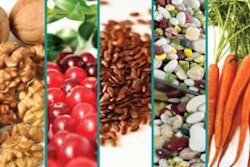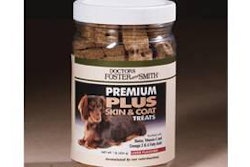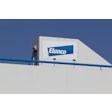
Dietary fiber has long been an important ingredient in companion animal diets. Not until recently have we begun to understand the numerous benefits dietary fiber may have on dog and cat health and well-being. Recent work on prebiotics and understanding the benefits of a healthful large bowel microbiota has increased the interest in dietary fibers. In particular, the database regarding dietary fibers and prebiotics is growing as it relates to pet animal nutrition and health.
The addition of prebiotic oligosaccharides (fructooligosaccharides [FOS], galactooligosacharides [GOS]) to diets has been shown to positively modulate intestinal bacterial concentrations. These microbial changes lead to increased short-chain fatty acid (SCFA) production and decreased intestinal pH that limits growth of potentially pathogenic bacteria. Prebiotics are food for probiotic, live microbial species that are capable of colonizing the intestine once ingested. Due to myriad issues, probiotics often struggle to colonize and remain colonized in the intestine. One method to overcome this problem is to use synbiotics, a combination of prebiotics and probiotics, which increases the persistence of the bacteria in the intestinal tract. Persistence is improved by providing a preferred food for the probiotic, thus promoting bacterial growth and enhancing colonization.
Two in vitro studies using canine fecal inoculum demonstrated that probiotic growth was enhanced when prebiotics (FOS and GOS) were added to the in vitro vessel (Tzortzis et al., 2004; Ogué-Bon et al., 2010). Unfortunately, there is only one published in vivo study in which synbiotics were evaluated in dogs. Swanson et al. (2002a) reported that feeding Lactobacillus acidophilus (2x109 CFU) was more effective in improving intestinal health indices when fed in combination with 4 g of FOS per day than when the probiotic was provided alone. From this limited dataset, it appears that probiotic supplementation may be more effective when fed with a prebiotic substrate than when fed alone.
Researchers have evaluated other dietary fiber sources for prebiotic potential. Pectins, sourced from apples, citrus or sugar beets, compare well to FOS substrates as regards to SCFA, particularly butyrate, production in vitro and in vivo; however, no beneficial microbial changes were noted when pectin was fed (Biagi et al., 2008; Bosch et al., 2008; Barry et al., 2010; Biagi et al., 2010).
Beet pulp has demonstrated prebiotic effects in vitro and in vivo as indicated by the production of SCFA being comparable to that of FOS (Middelbos et al., 2007; Bosch et al., 2008). Dogs fed a diet containing 2.5% beet pulp had increased (P < 0.05) fecal butyrate and Bifidobacteria spp. concentrations compared to dogs fed a diet containing 2.5% cellulose (Middelbos et al., 2007). Substrates containing mannanoligosaccharides (MOS; yeast cell wall and galactoglucomannan oligosaccharides) show promise as prebiotics as indicated by increased SCFA production and positive microbial modifications in dogs, but more research is needed to further verify the potential of mannans as prebiotic substrates (Swanson et al., 2002b; Middelbos et al., 2007; Faber et al., 2011).
With the ever increasing weight problems being experienced by pets, ingredients that are able to extend satiation and potentially improve weight loss are necessary. A main reason why weight loss programs fail is that the owner responds to begging and vocal behaviors by the hungry animal. By increasing satiety, these behaviors would likely decrease, allowing weight loss programs to be more effective.
Dietary fiber inclusion appears to improve the length of satiety and behaviors related to satiety. Weber et al. (2007) evaluated the effects of a high protein (HP), high fiber (HF), and a combination of high protein and high fiber (HPHF) diet on food intake and satiety. The HPHF- and HF-fed dogs had a lower voluntary food intake (27 kcal/kg BW0.73) compared to HP-fed dogs (57 kcal/kg BW0.73) when fed three hours after initial presentation of food. These differences in food intake may be due to differences in dietary fiber source. The HPHF diet contained more sources of soluble fiber (beet pulp, FOS and psyllium husk) compared to HP (beet pulp) and HF treatments (cellulose).
The effect of fiber type (soluble versus insoluble) on satiety in dogs has yet to be determined. The same HP and HPHF diets were evaluated in a clinical trial using 42 obese dogs with an initial body fat averaging 45%. Compared to HP-fed dogs, HPHF-fed dogs had a faster rate of weight loss (0.7% of BW/week and 1.0% of BW/week, respectively) and finished with a lower percentage body fat (33% and 27%, respectively; German et al., 2010).
Bosch et al. (2009a, b) evaluated the effect of diet fermentability on voluntary food intake and activity in dogs. Dogs were fed either a low-fermentable fiber diet (LFF; 8.5% cellulose) or a high-fermentable fiber diet (HFF; 8.5% sugarbeet pulp + 2% inulin). Compared to LFF-fed dogs, HFF-fed dogs tended to have a lower voluntary food intake (404 ± 70 g and 250 ± 46 g, respectively) and were less active as indicated by more time being spent resting or in an inactive-alert position. Results are thought to be related to the satiety of the dogs due to the greater fermentability of the diet. Increasing the concentration and fermentability of dietary fiber appears to be an effective method to improve satiety of dogs, thus leading to decreased food intake.
Although several benefits of dietary fiber inclusion have been described, further research will reveal the full potential of select dietary fiber ingredients. Research defining optimum dietary concentrations, new sources of prebiotics, and the health and behavioral benefits of dietary fiber will make this type of carbohydrate an ever more important dietary ingredient.














